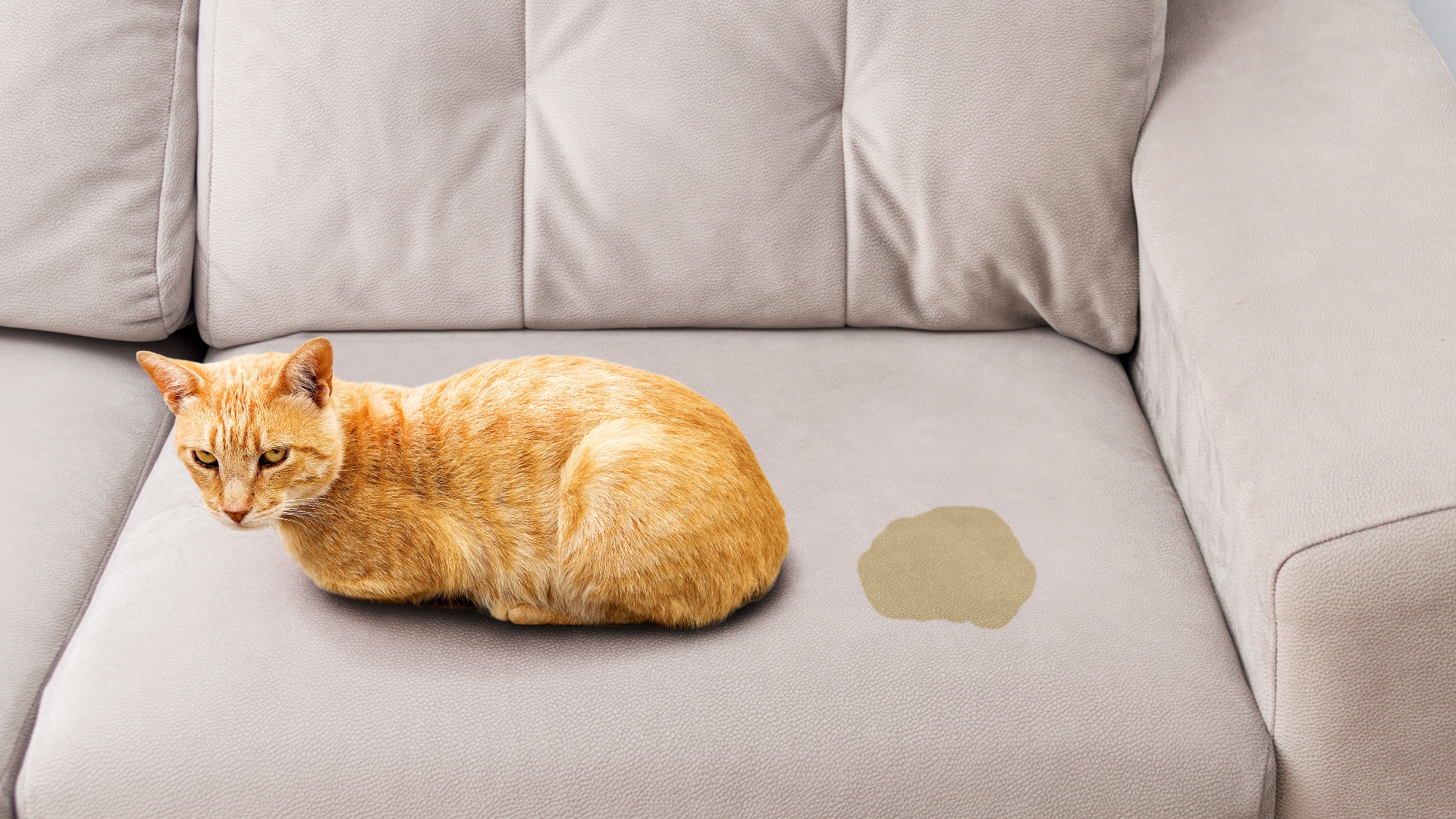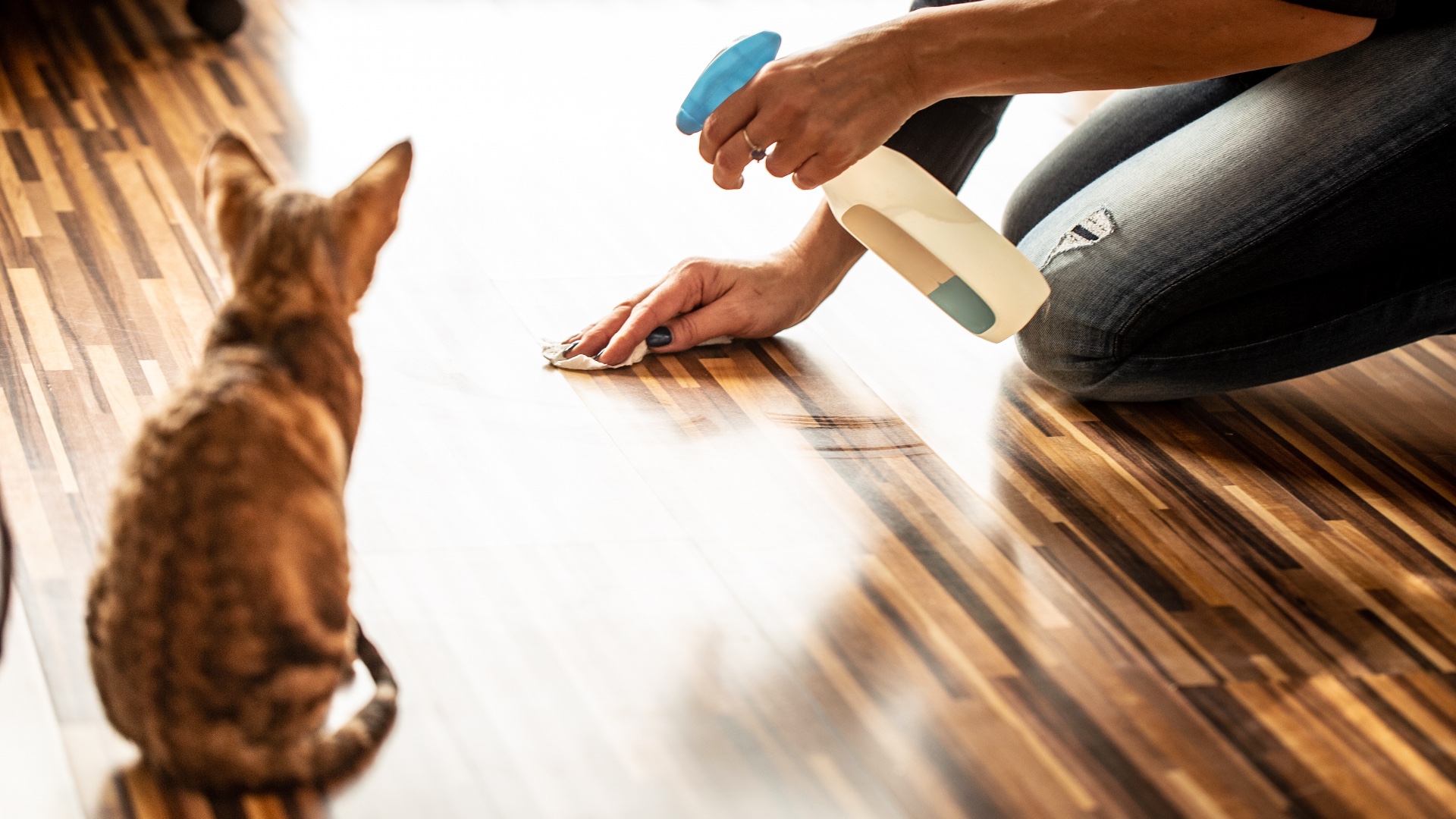How to stop a cat from peeing in the house
Learn how to stop a cat from peeing in the house with these top tips and tricks, plus we reveal the most common reasons cats pee outside their litter box

If you’ve found yourself in a situation where your kitty is using your home as their own personal bathroom, then figuring out how to stop a cat from peeing in the house is likely high on your agenda right now.
Even when you’ve provided your feline furkid with a litter box and are keeping it topped up with the best cat litter, there may still be times when you find they’re choosing to do their business elsewhere.
There’s nothing more frustrating than having your lovely home smelling like urine, but the good news is that inappropriate toileting behavior can be sorted out relatively easily.
Before we dive into our top tips and tricks on how to stop a cat peeing in the house, it’s important to understand why your kitty is doing this in the first place. Once you know the reason for the behavior, you’ll find it much easier to correct.
Why is my cat peeing in the house?
While it may feel like your cat is deliberately trying to make you want to tear your hair out, there are some legitimate reasons why your kitty may be suddenly peeing outside of their litter box. Let’s take a look at a few of the most common:
1. Medical problems
One of the first things you want to be on the lookout for if you notice a change in your cat’s toileting behavior is a medical problem that could be driving it. Some health issues that can cause cats to pee around the home, include:
- Urinary tract infections: Also known as UTI’s, urinary tract infections are common in senior cats and are caused by bacteria in the urine that creates an inflammatory response that triggers a need to frequently urinate. The good news is, antibiotics can clear up a UTI pretty quickly.
- Bladder stones: These crystal formations often go hand in hand with a UTI and can cause a lot of irritation and, in some cases, blockages.
- Metabolic disease: Kidney disease often triggers the need to frequently urinate, as does liver disease, diabetes and thyroid issues. If your cat is drinking a lot more than usual, it could be a sign they have an underlying health condition that needs attention.
If your kitty has started peeing outside the litter box after previously being toilet trained, we recommend you take them to your vet who will be able to run some tests and advise you on the best course of action.
2. Stress and anxiety
Have there been any changes in your home recently? Any visitors, building works, new additions to the family or new routines that may be causing your feline furkid some stress or anxiety?
A bit like us humans, cats are creatures of habit and urinating outside of their litter box may be their way of telling you they’re struggling with changes in their environment.
If you think stress might be the culprit, create a safe space for your kitty to retreat to. Invest in one of the best cat beds, put it in a quiet corner of the house and pop a few toys nearby. Consider this your cat’s little refuge that nobody else has access to.
You might also like to invest in a chill-out gadget like Feliway, a plug-in diffuser that uses natural pheromones to send calming messages to cats.
3. Litter box issues
Another thing worth checking out is whether there are any problems with your cat’s litter box. This could be the style of the litter box, the location, the litter you’ve chosen, having more than one cat using the litter box, or the litter box not being clean enough.
How to stop a cat from peeing in the house

Now that you know some of the common reasons your cat may be peeing outside of their litter box, it’s time to get to the part you’ve been waiting for - how to stop it! Here are our favorite tips and tricks that will have your kitty once again doing their business where they’re supposed to.
1. Remove the odor
Cats love returning to the scene of their crime and the reason they do that is because they can smell their scent from the last time they urinated there. As long as the odor remains, your cat will keep coming back, so getting rid of it is key.
Immediately clean and disinfect the area and follow up with an odor neutralizing spray - one that lists orange oil as an ingredient is a great choice as cats hate the smell of citrus.
Even if you can no longer smell the odor, your cat may well be able to, so use a black light to make sure you’ve cleaned the area well. If your cat has a favorite spot, you can also cover it with aluminum foil as cats hate the sound and texture.
2. Tackle territory issues
Male cats are notorious for spraying as a way to mark their territory and some will continue to do it even when they’ve been neutered. If you have a male cat and you notice them spraying, the most important thing to do is to make them feel safe and secure.
There’s not a lot you can do about neighborhood cats, except not encouraging them to visit your property, but if you have a multi-cat household there are ways of stamping out this behavior.
Invest in separate litter boxes for each cat, provide them with their own beds, scratching posts, and cat trees, and give them their own space to hang out in. It can take up to a year for new cats to get used to one another and even after that they may never fully be friends, although they can learn to co-exist peacefully.
3. Sort out their litter box
Cats can be funny creatures and even the slightest change or minor issue can be enough to have them forgoing their litter box in favor of certain spots around the home. If you think their litter box might be a problem, here are some things to consider:
- Change the litter box completely: If you’re using an enclosed litter box, try an open one or vice versa. It could be the style doesn’t work for your kitty and simply changing it could make a difference. Also, make sure it’s big enough for them to turn around in and comfortably get in and out of.
- Swap the litter you’re using: It could be that your cat doesn’t like the feel of the litter under their paws or that the smell is too strong for them. Try changing their litter and seeing if that makes a difference.
- Move the location: Where is the litter box currently located? Make sure it’s in a convenient spot that is easy to get to and if you have a multi-storied property, ensure there’s one on each floor.
- Give each cat their own litter box: If you have more than one cat, it’s worth giving them their own litter box. Cats are really picky about using a litter box that contains another cat's urine and feces, so try giving your cats one each to avoid this problem.
- Keep it clean: This probably goes without saying, but cats are fastidious about hygiene and so a dirty litter box will have them heading elsewhere. Make sure to empty and clean it regularly.
- Install a ramp: Now, that may sound a little silly, but if you have a senior cat, part of the problem may be that they’re finding it hard to get in and out of their litter box because of mobility issues and joint pain. Providing a ramp can help make life a lot easier and more comfortable for them.
Some simple changes to your cat’s litter box situation could be all that’s needed to get them back to peeing where they’re meant to!
4. Speak to your vet
If you’ve tried all of the above tips and your cat is still peeing around the house, it’s important you consult your vet who will be able to run some tests and rule out any underlying medical issues.
Depending on the outcome of your vet’s investigations, they may be able to provide antibiotics or treatment for infections and other health conditions or, if no health problems are found, help you come up with a plan to tackle any environmental or behavioral issues that may be causing your feline furkid to do their business outside their litter box.
PetsRadar Newsletter
Get the best advice, tips and top tech for your beloved Pets

Kathryn is a freelance writer who has been a member of the PetsRadar family since it launched in 2020. Highly experienced in her field, she's driven by a desire to provide pet parents with accurate, timely, and informative content that enables them to provide their fur friends with everything they need to thrive. Kathryn works closely with vets and trainers to ensure all articles offer the most up-to-date information across a range of pet-related fields, from insights into health and behavior issues to tips on products and training. When she’s not busy crafting the perfect sentence for her features, buying guides and news pieces, she can be found hanging out with her family (which includes one super sassy cat), drinking copious amounts of Jasmine tea and reading all the books.
